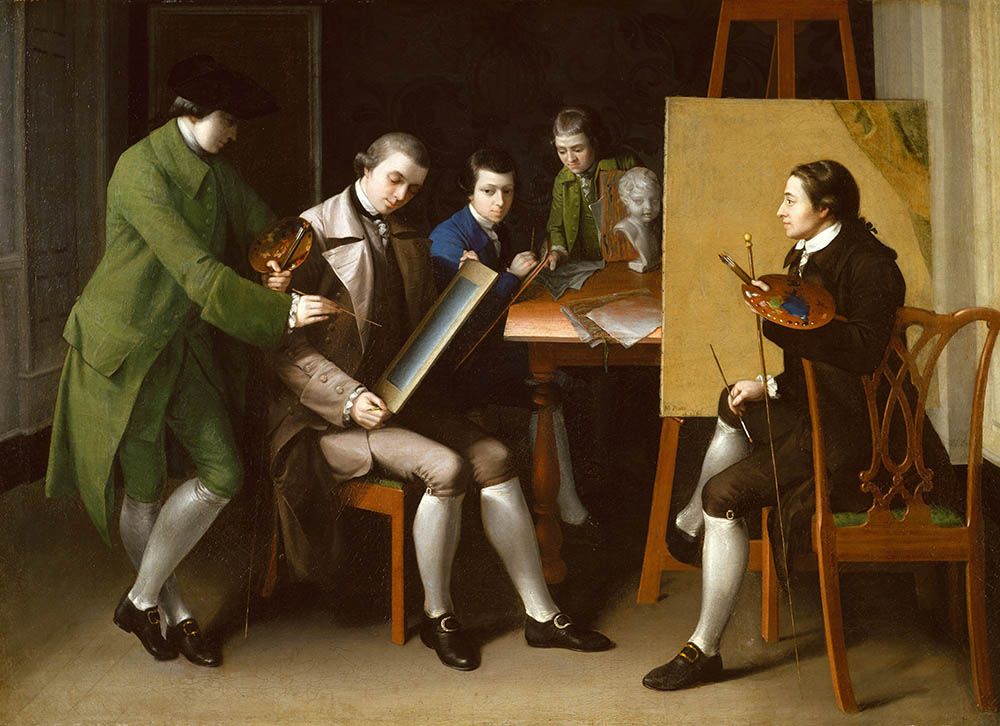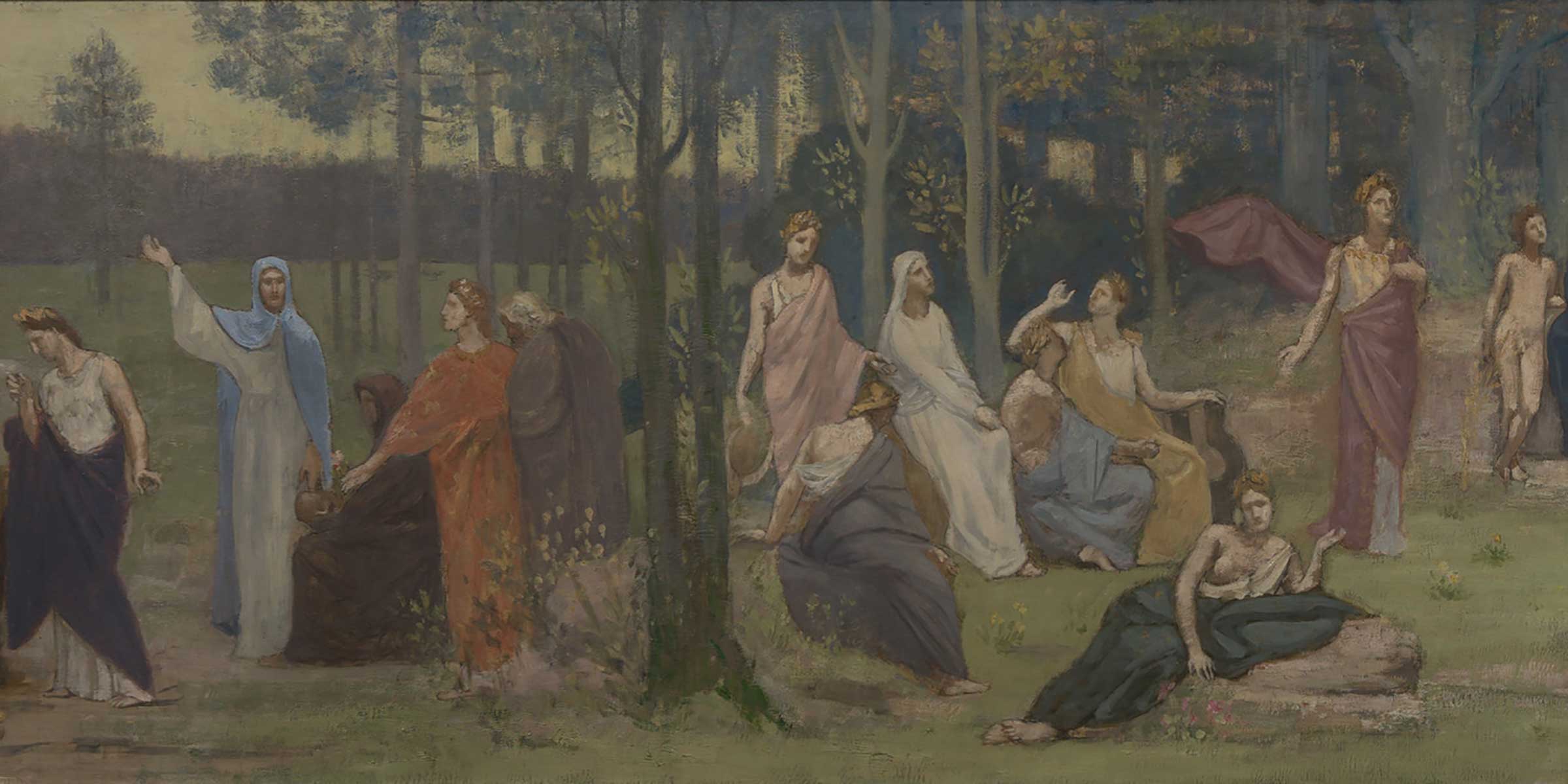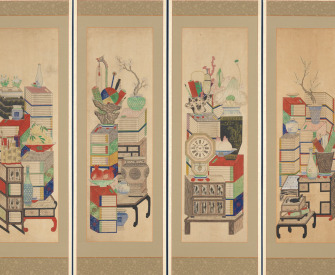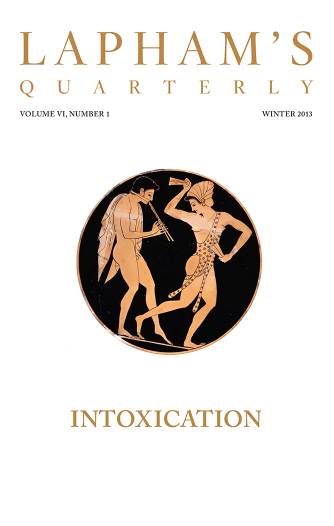What one knows is, in youth, of little moment; they know enough who know how to learn.
—Henry Adams, 1907Misdirectives
A public high school teacher asks why the wrong things cause a fuss in schools.
By Ian Altman

Doll teaches a class, by Mira, c. 1900. Rijksmuseum.
One late fall morning in 2010, a high school junior walked past my classroom door and asked me to call Georgia’s senators, Saxby Chambliss and Johnny Isakson, and request that they support the DREAM Act, legislation that opens a path to U.S. citizenship for undocumented minors and would soon face a cloture vote. Without thinking, I said, “Sure, of course.” Elizabeth had been my literature student in ninth grade and would be again the next semester. She has a wild intelligence, introspective and supremely intense. She was halfway down the hall by the time I did a double take and realized what she had revealed to me.
“Those sons of bitches,” I thought. “They can’t do this to her.” Georgia bans undocumented students from applying to its top state schools, including our hometown of Athens’ University of Georgia and Atlanta’s Georgia Tech. The next time we spoke, I assured her that I would do everything in my meager power to help her find a way into college.
The next year, when Elizabeth was a senior, I brought her and two other undocumented students to UGA’s student center to tell their stories to a wider audience. We had reserved a room for about eighty people. Over two hundred showed up. I had just made my brief introduction when we hit capacity and had to move to a larger room. As I was collecting a handful of cords and microphones, I noticed a large man talking to Elizabeth, leaning in toward her. Then someone told me, “Get her away from him. That’s our state senator.” Frank Ginn had supported a copycat version of Arizona’s “show me your papers” law that would allow local law enforcement to detain persons they had any cause to believe were undocumented. He was demanding that Elizabeth explain what she meant when she said she was “undocumented,” as if the word hid a more fundamental fact about her. He played a cheap game, interrupting her calm responses, trying to get her to admit to some form of criminality. I walked between them and drew him away from her. Afterward Ginn tried to take pictures of the students speaking. This was a year before the announcement of the Deferred Action for Childhood Arrivals policy, which allowed people who had entered the country as children to apply for legally recognized status, and Ginn’s behavior caused real fear. Fortunately, he sat too far back for the pictures to be usable.
Elizabeth handled the episode well and didn’t need my help. In 2012 she got herself out of Georgia, earning a full academic ride to Syracuse University. She is married to another former student of mine and now has a green card. Unlike far too many similar stories, hers has a happy ending. But that image of a middle-aged man, an elected official, publicly and without shame bullying a legally vulnerable seventeen-year-old kid stays with me. Later I received anonymous hate mail after I wrote an op-ed about helping undocumented students.
I teach primarily American literature and an AP rhetoric course, but over my sixteen years at a public high school, I’ve taught most of the courses offered in our English department, from a ninth-grade survey to British and multicultural literature. My route into teaching was circuitous. I had studied philosophy as an undergraduate in the 1990s in part because the injunction that learning should deliberately produce a career offended me. Not that I was hoodwinked by some romantic notion of learning for its own sake—I was curious about the nature and history of knowledge as such, and thus about literature, history, and other languages, so I pursued studies that kept me reading with no goal in sight. In those years I worked odd jobs and occasionally made the rent by seeking out drunks at dartboards, but I always paid attention to people, how they learned and what they thought about.
One of the jobs that best prepared me for teaching was working in maintenance for rental properties. Athens is a small city, but in general UGA students, living in their self-contained world, have no idea what the town is really like. I repaired the electricity and plumbing in Section 8 apartments occupied by people who worked as custodians and landscapers at UGA. Many of them had to take other jobs to keep afloat, while the land-grant institution that employed them pays no property taxes to support the public schools. It was not just the inequity of the situation that struck me but the realization that this is how generational poverty persists and how easy it was to be blind to the town where I’d lived for ten years. You have to know your community to teach in it.
I kept thinking about a seminar I’d taken years before on the political ethics of secession. It had prompted me to research educational policies and how they affect liberal and communitarian views on, and clashes about, the right of free association. I was interested in disputes between Amish communities and states mandating education, and I had always been bothered by the white-flight private schools that proliferated after integration in Macon, where I grew up. It was easy to see the racism, but underneath that I saw a kind of cowardice that was just as contemptible—a refusal to acknowledge or take part in the public good. For the right to free association to have meaning, the possibilities for association must be known, and the state should have the power to mandate some level of that learning. I’d make the argument differently now than I did in my early twenties, but I still believe this; it is entailed by the basic Enlightenment principle that it is always, in every case, better to know than not to know. Maybe parents will be a little afraid of what their kids learn in school. Knowledge can lead to dissent, setting students on a path to leave a religion, a party, or a country. So be it.

The American School, by Matthew Pratt, 1765. The Metropolitan Museum of Art, gift of Samuel P. Avery, 1897.
It’s never been just the kids who have things to learn about the world. That is particularly true of our elected officials, and not only those like Frank Ginn. He was serving a nativist ideology that blinded him to substantive knowledge about Elizabeth—her intellect, her personality, her astounding ability to learn new languages as if by absorption from the ether, her moral strength. To him she was a living example of something he disapproved of, as if her existence were somehow unethical by nature. But many of us, including teachers, likewise see students as representations, and the ideology we have to serve—creating good consumers, rather than independent people who possess both knowledge and humility—also prevents us from appreciating who students are. We don’t ask too many questions about their real selves. In part that is the way it should be. Students’ private lives should remain private, and when they come to me with personal problems, it is always a fine line I walk to address them. I wouldn’t have known Elizabeth’s immigration status, and it would have been unethical to have asked, if she hadn’t come to me for help.
Our general directive is to make students useful, though we elevate this injunction with talk of dreams and riches and conflate it with being a good citizen. Much of what public school teachers do—prompted by state and federal requirements—is more like training than education. We have formulas to instruct students how to write paragraphs that resemble the equation y = mx + b, for defining the slope intercept of a line, and we use those instead of teaching students to think carefully about what to write, to consider why it’s worth writing about and how best to communicate it clearly and creatively. We have largely trained students to demand to be taught what to do and how to follow a formula, diminishing their capacity to question, rather than teaching them how to think, to ask why. Education is reduced to schooling.
Forty-six states, including Georgia, have “academic standards” either derived from or directly copied from the Common Core State Standards, created in 2009 by committees in the National Governors Association Center for Best Practices and the Council of Chief State School Officers. The standards are intended to “drive instruction,” redirecting teaching above the heads of the teachers themselves. We are not supposed to decide what to teach. Instead we rely on the standards, so named to assure both equity and quality.
Instruction is a curious word, and its etymology is telling: to pile on, to build. The term is invoked as if teachers were laypeople who might not know what their job is until they’ve studied prescribed, delineated procedures. I tease my colleagues that instructions are found in repair manuals: how to change your oil, how to configure a hard drive, rules of form to affect consternation in faculty meetings. Teaching, on the other hand, is related to pointing out, showing. Instruction merely happens to students. Teaching implies the involvement of students’ imaginations. What we do should be called teaching, not instruction. A minor quibble but emblematic of the condescension both teachers and students endure.
There are generally agreed-upon principles for how to plan standards-based teaching. We call it “backward design” and have elaborate meetings about it. We describe what we want students to learn to do in a unit of study, ask what smaller pieces they’ll need to achieve that, and design the smaller pieces to build to the goal of “mastering” standards. This is elementary and normal, and sometimes unobjectionable. But we are supposed to use the same method for teaching literature, and that is where the standards as “drivers of instruction” fall apart. This failure of theory, which we are forced by punitive evaluations to enact in practice, is compounded by standardized tests. Both students who fail and those who ace these exams suffer: failures are subjected to remediation and told that they don’t know enough yet and feel the strain of judgment; aces are praised for high achievement but often know that the accolades don’t mean much. Either way we perpetrate a kind of fraud, verifying that students have gained knowledge by means that have no bearing on what they truly know.
Teachers frequently complain of having to “teach to the test.” In reply, administrators tell us that if we simply teach the standards, then the tests shouldn’t be a problem. Often our complaints are small: We had too good of a time with Marianne Moore and modernist poetry, and we didn’t give enough time to the Romantics. Alas, the semester is short, and the test had Emily Dickinson. But I mean something else. When we follow the instructions to teach the standards with “fidelity” and “laser-like focus,” as our professional jargon calls it, we actively impede literacy. A favorite book of some of my students, including Elizabeth, is John Steinbeck’s East of Eden, which I never assigned; they came to it on their own. Yet we spoke at length about it in class, and I showed them the relevant Hebrew passage in Genesis. Another student made a fascinating watercolor to help convey her interpretation of Toni Morrison’s The Bluest Eye, and her painting became the cover illustration for the book Teaching Outside the Box but Inside the Standards. One student independently read Vladimir Nabokov’s Lolita, and I had the fraught task of trying to convince her that Humbert was not the victim. Mary Crow Dog’s Lakota Woman helped students recognize the impact of colonialism on how we make sense of ourselves and our national identity. All these experiences came from teaching books, not standards.
Yet professional training regimes assume that when we teach the standards instead of books, our efforts are generalizable, applicable to all books. The English Common Core standard 2 for grades eleven and twelve states, “Determine two or more themes or central ideas of a text and analyze their development over the course of the text, including how they interact and build on one another to produce a complex account; provide an objective summary of the text.” This is repeated verbatim in Georgia’s Standards of Excellence.
Let us compare how this dictum applies to two texts taught in many high school classrooms: Arthur Miller’s The Crucible and Lorraine Hansberry’s A Raisin in the Sun. Both are mid-twentieth-century American dramas with male protagonists in their thirties, both are concerned with social and political problems that have twenty-first-century reverberations, and both have themes of guilt and of people struggling to find the moral strength to live and die with integrity. If I teach The Crucible to one class and A Raisin in the Sun to another, the standards maintain that students should have equivalent academic experiences.
But it is entirely possible for student A, reading A Raisin in the Sun, to understand that Walter Younger stands up to Karl Lindner in the name of his family’s honor, and for student B, reading The Crucible, to think John Proctor a coward, rather than someone who chooses to die to preserve his own sense of honor. Students may find it easier to imagine Walter facing down racism and redlining than to imagine John deciding to hang and forgo his obligation to raise his children. Did student B miss the point of the play? How do we assess their understanding? Should they be penalized for an unorthodox reading in an analytical essay? I’d say no, but many teachers would say yes. Facing a question about the correct understanding of a theme—as though interpretation and discussion of literature could be reduced to that question—on a reductive multiple-choice exam, they have no opportunity to communicate their thoughts. The test itself seems to be specifically designed to obstruct thinking. Neither student’s answers would reveal any datum fit to be graphed or further facts about their grasp of “theme” or “central ideas” according to the standard. Each book requires its own historical and religious awareness, philosophical orientation, and emotional vector. Reducing the understanding of complex literary and political ideas to the practice of skills, as standards-based teaching directs, is entirely beside the point of reading and elides the very ideas students are supposed to comprehend. This is one reason too many students don’t like to read: we’ve burdened them with tasks to fulfill instead of revelations to be found. Although we are directed to teach standards, not books, such standards exist only because of books, and the books themselves are not standard in any meaningful sense. Our official instructional directives are not wrong, in any way we can differentiate them from right, because they are articulate gibberish.
This leaves it open for us to teach almost anything and use the standards to justify it without overtaxing our imaginations. There is no reason we cannot expand the themes literature addresses beyond the vanilla universals of high school anthologies. We can teach A Raisin in the Sun alongside the history of redlining, the ever-present dangers of resurgent McCarthyism with The Crucible, Toni Morrison’s handling of the white gaze in The Bluest Eye, William Faulkner’s As I Lay Dying as a nihilistic burlesque of the hero’s journey, James Baldwin’s evocation of the utter madness of white Americans’ sense of identity in “The Uses of the Blues” or “A Talk to Teachers.” This is part of what makes the job worth keeping.
And yet this is not enough—or is perhaps too much, judging from the contemporary debate. I was happy when a student told me that it was ludicrous to think teachers could have so much power to change students’ worldviews and arrogant of us to believe we could. I’ve had several students come to visit years after they graduated to tell me they didn’t quite realize what I was trying to do in their courses until they were well into college, and they thanked me for insisting that they learn how to come up with their own thoughts on their own terms. Parents have frequently told me this as well. Yet we are relentlessly directed to make our students into productive citizens—not thoughtful, not good, not critical, but productive. And students will be more useful, more compliant, if we do not discuss or even provide the intellectual space for thinking about their lived political realities.

The Allegory of the Sorbonne (detail), by Pierre Puvis de Chavannes, 1889. The Metropolitan Museum of Art, H.O. Havemeyer Collection, bequest of Mrs. H.O. Havemeyer, 1929.
The current horde of book banners and goons at education board meetings (not a new thing in this country) could be seen as evidence of how education fails, thanks to teachers dutifully following instructions and carefully avoiding the touchy political matters that lie at the heart of any serious study of literature and history. These adults’ caterwauling grew out of the wholesome compliance and deference to rules and decorum they learned in school, though without seeming to have paid much attention to what they read. We do not need to look beyond ostensibly respectable classics to see the irony that almost anything worth reading and studying will be filled with morally ambiguous and repugnant characters, narrate foolish or appalling behavior, and cause us to engage with discomfiting ideas. The desire to avoid good literature—or to teach it badly, as though it were somehow safe—comes at the cost of intellectual and moral stunting.
It is not unusual, for example, to find antiheroes in American war novels: Stephen Crane’s The Red Badge of Courage has Henry Fleming fleeing the battle and seeking to overcome his shame; in Ernest Hemingway’s A Farewell to Arms, Frederic Henry takes shrapnel while eating a piece of cheese, saying that words like courage are obscene, and escapes summary execution from his own allies; Joseph Heller’s Catch-22 identifies not the Nazis but the U.S. Army bureaucracy as Yossarian’s enemy. As for family values, recall Mercutio teasing Romeo with an image of anal sex, Edna Pontellier’s adultery and suicide in The Awakening, Odysseus and Telemachus torturing Melanthius to death and feeding his genitals to dogs. And race cannot be sidelined: the tragedy of Faulkner’s Absalom, Absalom! is caused not by incest but by the threat of miscegenation, and Richard Wright’s Native Son spins a doomed web with an executioner at its heart. We don’t need any theory, critical or otherwise, to justify teaching these books. This is the work of a public school teacher. Teachers didn’t invent the subversion threaded throughout canonical literature or the thorns and complexity of history. Reading anything worthwhile means discovering those ideas, as I did when a student’s comment about the theft of Black Americans’ history caused me to rethink how I taught August Wilson’s play The Piano Lesson. As I thought about what he said, it became clear to me how different it is merely to have history than to possess it, with all the ethical and political weight that possession carries. Teaching that through the play’s symbolism gave students a new way to interpret some facets of America’s twentieth century. Perhaps some adults are frightened not of what students will learn about themselves but of what they’ll learn about their parents and older generations.
Those who trouble over this could learn something from Fyodor Dostoevsky’s The Brothers Karamazov. In it Ivan dreams that the Grand Inquisitor arrests the risen Christ to preserve happiness and the security of not having to choose good over evil, arguing that having the power of choice does not help the church, that moral freedom is too awful a burden for most people to bear. We wouldn’t be wrong to detect Lucifer’s pride in the inquisitor’s arguments. For all their talk of liberty, those who would threaten and abuse teachers and proclaim which books are evil seem awfully afraid of their children having the power to choose virtue.
In The Ancients and the Moderns, the philosopher Stanley Rosen elaborates what a conservative education, based on the principle that whatever is not explicitly permitted is forbidden, would look like: a kind of self-immolation. Scientific and all critical thinking would be disallowed. Books would burn, and in every generation the guardians would have to destroy all children above a certain modest intellect. And if they were successful, “will there not come a time when the guardians are themselves too dull-witted to separate the dangerous children from their innocuous brothers and sisters?” asks Rosen. “Safety requires that all children be destroyed: that is the ultimate absurdity of the attack against the Enlightenment.” Of course, no one has actually proposed such a preposterous scheme. (Though perhaps we could be forgiven for wondering what to make of our outrageous history of school shootings.) But this is the final form of the conservative paradigm, and “if the paradigm is itself absurd, then it cannot serve as a noble or prudent standard by which to rectify our own baseness.”
It should not be surprising that students often view school with wariness. We don’t give them enough credit: they know something is missing even if they can’t fully articulate it. They need a reason to learn that is not extrinsic, not merely tied to employability and being a productive citizen and reliable consumer. Most of them suspect that those qualities are not enough to make them good people. So I return to the Enlightenment principle that it is always better to know than not to know, tempered by the Socratic wisdom of being self-aware enough to know of our own ignorance. This is the key to demanding better of our politicians and of ourselves and our history, because the unexamined life is not worth living. I will never ask permission to say this or to teach students how to see it.

